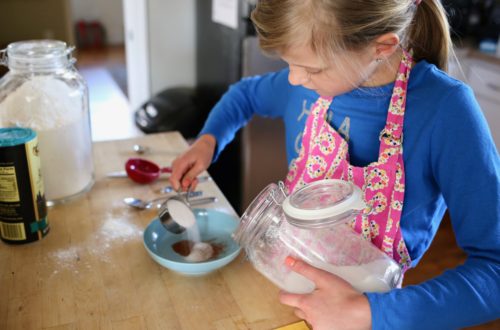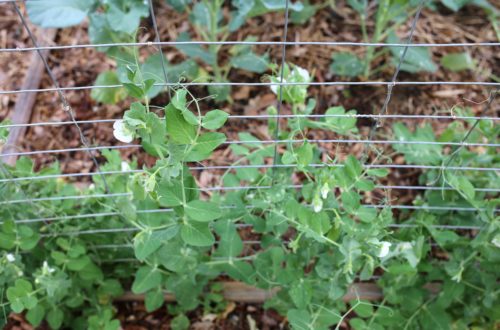the one about food.
I’ve had this post brewing for months in response to the questions I get, namely, Are you still seeing your nutritionist?, What’s your diet like these days?, Is it working?, Are you still gluten-free?
I’ve wanted to talk about food in our household, but I’m glad it’s taken awhile to form my thoughts into words, because time has allowed us to more or less settle into a routine we can all live with. Now the challenge is to condense it into a blog post you will actually care to read (and if you skip right over this one, I won’t be offended!).
So here goes . . .
After all our reading and documentary-watching, after meeting with my nutritionist, after countless blogs and many cookbooks and conversations, David and I have come to agree on one simple question that we apply to diet (or any!) changes in our household: Is this sustainable for our family?
Meaning, is it too radical to keep up for the long haul? Does it require too much time, energy, devotion, money?
This has been immensely helpful because I’ll be the first to tell you I’m a fad kind of person. I’m happy to jump on the paleo bandwagon or the nutritional supplement bandwagon or the vegan bandwagon–then revert back to my old ways within a week or two. David brings a measure of realism I need (and by that I mean that when I say, “I’m quitting coffee for good!” he says, “We’ll see.”).
Here’s the second question we’ve started to ask ourselves: Forget total lifestyle overhaul; what is one small change I can make right now, today? Meaning: I may not be able to swear off coffee and white sugar, but I can eat a salad for lunch today.
These two questions have brought freedom to our household, and to me in particular. Most of us know we ought to eat healthy, exercise more, consume less, etc. And we feel massive amounts of guilt that we don’t do all those things, so we unknowingly allow that guilt to paralyze us and keep us from doing anything. At least that’s generally how I operate.
The best thing my nutritionist told me when we met back in June was, “I don’t want you to focus on cutting things out of your diet; instead focus on adding healthy foods.” Forget nixing caffeine; add a smoothie to your afternoon snack.
I really think that was the key that inspired me to follow her advice. Do I follow all of her dietary recommendations? No. Do I follow more than I did last June? Yes!
Having said all of that, here’s a few changes we’ve made to our eating habits that we feel are sustainable.
1. Buy mostly whole foods. Whole foods are those with one ingredient, such as an apple or almonds. Conversely, don’t buy processed foods. Michael Pollan gives a helpful definition of processed foods: “Food with more than five ingredients on the label, food with ingredients you can’t pronounce.” Or basically, packaged food.
I’d like to say our pantry is completely comprised of whole foods now, but it’s not. We still have ketchup and mayonnaise in the fridge, and try as I might I can’t seem to get away from buying boxed cereal and bread (most store-bought bread has upwards of 17 ingredients).
But we try to move more and more in that direction–baby steps–and eating a largely-whole-foods-diet has helped enormously with my stomach trouble (upset stomach, IBS).
We started by ceasing to buy packaged snack foods. Even organic, “healthy” packaged snack foods. It was hard, I tell you. And we’re still known to bring home a bag of Kettle Honey Dijon potato chips from time to time.
But honestly, I think that was the important first step that got us started on this road. We both admitted: If junk food is in the house, we will eat it. Conversely, if it’s not there, we’ve got to eat an apple, or nothing at all. And it works!
2. Eat less meat. We eat 1/2 to 1/3 of the meat we used to. We didn’t set out to be so extreme, but once we started we found we didn’t miss it–and we enjoy those meals with meat all the more. Mark Bittman has great ideas for reducing consumption of meat; one of them is to simply start halving the amount of meat you cook with–spaghetti, casseroles, etc. He suggests beginning to view meat more as a flavoring than as the main course, and that’s worked great for us.
Now David did get a Weber grill for Christmas which, of course, means meat. But we realized when we eat less meat, we really enjoy it more. That juicy Hunter Gatherer burger on date night becomes something I look forward to all week.
Michael Pollan says that if you’re interested in conserving fossil fuels and respecting the environment, reducing meat consumption–even just by one or two meals a week– is perhaps the best decision your family can make. It will also save you money!
3. Juice veggies for breakfast. Ahhh to juice or not to juice? That topic is up for debate. I found the film Fat, Sick and Nearly Dead very enjoying and helpful, but I know not everyone agrees with juicing because it goes against the “whole foods” principle. Better to make fruit/veggie smoothies than juice. I really don’t think you can go wrong with either habit.
Juicing was recommended to me because I have a “compromised immune system” (i.e. I’ve been sick and on antibiotics too much). Juicing removes the pulp/fiber from the plants which allows your body to “gently” absorb the nutrients without working to digest the food.
David and I decided to take the plunge when we found a used Champion 2000 juicer at an Amish farm store up in PA, and we’ve never looked back. This may be our favorite diet decision. We haven’t felt the need to do a “juice fast,” like the documentary talks about. But when we’re in town, we juice for breakfast probably five mornings a week and it is a little time-consuming (probably 15 minutes total so not that time-consuming). For your body to get the enzymes you should drink the juice on an empty stomach within 30 minutes of making it.
Although we get lazy sometimes and don’t feel like jumping up first thing in the morning to make juice, we both feel so much better when we do. So far I’ve staved off winter colds and I really think it’s due to juicing regularly.
After a winter of traveling, I notice a difference in the way I feel (mostly energy level) without the habit. We also agree that starting the day with juice has a way of motivating us to eat healthier during the day; carrot sticks for a snack, salad for lunch.
4. Reduce dairy. One thing my allergist told me that I’ve heard from a few other friends is that dairy and white sugar feed allergies. So we have cut back on both in our household, since Judah and I both have allergies. We still have weekly family pizza night and hot chocolate from time to time, but we don’t give our kids dairy (even milk to drink) every day and I personally now completely avoid milk and ice-cream. I still eat milk and butter in recipes like biscuits, and cheese as well, but even drastically cutting back has helped my allergies be almost nonexistent this winter.
5. Limit gluten. This one’s just for me. Even if I cut it out of two meals a day, I seem to be okay with eating it for dinner or dessert. For budget reasons, I haven’t used gluten substitutes since returning home from South Asia (although thanks to Barb’s suggestion I will definitely be buying GF flour for my chocolate mug cakes!). I just try to avoid processed food and bread products.
I think those are the main points!
Another principle my nutritionist taught me that we’ve loved is: Keep these diet rules at home; when you’re out of the house, eat anything you want! Of course it would be different if I had diagnosed food allergies, but my test results came back clear. We work hard to be healthy at home so that when we eat out or eat at friends’ houses we can enjoy our food guilt-free.
I will say that my health has struggled with all our traveling–thankfully I haven’t gotten real colds or sinus infections, I’ve just felt generally sluggish and had a perpetual upset stomach. So while I just don’t have the discipline to stick to our food principles when we’re out and about, it’s a good motivator for me to return to these habits when our lives settle down a bit.
Please don’t read this and think we’re totally extreme now. There are days we eat poorly–whole weeks even–but we just try to get up and start fresh again the next day. It’s definitely more of a process than a finished product, and I’m sure always will be. But I’ve noticed enough health changes from our new diet, that I’m motivated to keep at it.
And I’m actually enjoying myself!
(okay, now I’m taking your questions . . . Do your kids eat the same way you do?, What about calcium?, Is it possible to eat healthy on a budget?, What do you think about eating organic?, etc, etc. Send them on and I’ll write a post!)
Resources:
Favorite book that sums up the food habits we’re trying to embrace: Food Rules, by Michael Pollan (Succinct, sensible, fun. You’ll love it. E.g. “You can eat as many sweets as you want, as long as they’re made from scratch”).
Current favorite blog for learning about real food and cooking whole foods for kids: 100 Days of Real Food
Current favorite cookbook (although it changes monthly, and you know I’m always devoted to Mark Bittman): Dinner: A Love Story, by Jenny Rosenstrach




One Comment
Grace
yay! I love food posts! I could talk all day about healthy diet choices. We do so much of the same stuff here, and it is really life changing. I’ve slowly moved the children down to about 80% off of gluten, just because I want them to eat more protein and not develop the same allergies I have to it. I am dairy free too, but my family isn’t. 🙂 We live “paleo”ish around here, and I find it completely sustainable (for our familu), but I think it’s interesting, the idea of cutting more meat out. Good points! When Josh travels I become almost a complete vegetarian. I like the idea of cutting the amount in half. I’ll have to incorporate that! We don’t juice, I’m one of those pulp/fiber lovers. But I’ve always been very intrigued by it. What are your favorite juicing recipes? Do you mix fruits and veggies?